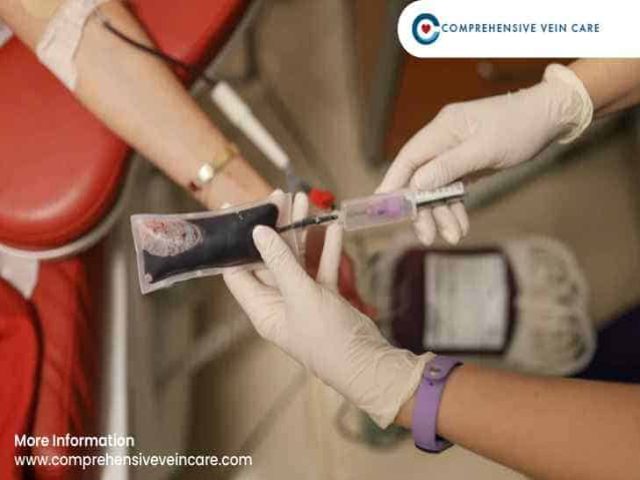Varicose veins can be an embarrassing thing for many people, but could this common condition be a sign of a serious health problem?
A study found that swollen, twisted veins that can only be seen under the skin can increase a person’s risk of potentially fatal blood clots, also known as deep vein thrombosis (DVT), which can result from long periods of inactivity, such as sitting for too long, periods of bed rest, or long trips.
However, even the researchers behind this study concede that their findings cannot link varicose veins directly to a higher risk for these conditions. And that’s good news since varicose veins are a common occurrence affecting 23 percent of adults in the United States. A person is more at risk for varicose veins if they are older, female, obese, do not exercise, or have a family history of varicose veins. This condition may also be more common during pregnancy.
When varicose veins reach the point where chronic stasis of blood in the legs causes skin changes, the patient may notice skin discoloration, thickening or hardening of the skin, recurrent skin infections, and bleeding that may be excessive, and leg wounds not healing.
It is normal for us to have patients with blood clots. Some are referred by their primary care providers and others have problems with blood clotting concerns. However, there are many patients who are shocked to learn that when we examine them with duplex ultrasound, they have a blood clot.
What is a Blood Clot?
Blood clots are semi-solid masses of blood that can remain stationary (thrombosis) and block blood flow or break off (embolism) and travel to various parts of the body. Blood clots can be life-threatening depending on the location and severity of the clot.
Your doctor will probably do a physical exam and may perform a venous ultrasound or computed tomography angiogram (CTA) of the chest, abdomen/pelvis, or head to help diagnose your condition. Treatment may depend on whether the clot is located in an artery or vein. Your doctor may prescribe medication, catheter-directed thrombolysis, surgery, or placement of an inferior vena cava filter (IVC) to treat your condition.
Varicose veins are a common condition affecting nearly 1 in 4 American adults. While they should be treated immediately, most physicians do not consider them to be cause for alarm in and of themselves, but rather a chronic condition. A causal relationship between varicose veins and blood clots would make immediate treatment of varicose veins more imperative than ever.
When to Worry About your Varicose Veins?
Varicose veins are the result of defective valves in the leg veins. These defective valves weaken the vein walls by increasing the pressure of the pooled blood in the vein. Normally, the valves close and push the blood back to the heart; when they cannot close, the blood pools and enlarge in the vein. Eventually, the vein wall stretches outward, becoming a varicose vein.
Varicose veins produce different symptoms. While not medically serious, they do indicate that therapy prescribed by a physician will help. Pain and heavy legs, as well as itching, throbbing and cramping, are typical characteristics of varicose veins.
These symptoms can also keep you awake at night, which contributes to restless leg syndrome (RLS). Although RLS and varicose veins are different conditions, studies have suggested a link between the two. Those studies concluded that, for some patients with RLS, treatments for varicose veins reduced RLS symptoms. It is also advisable to seek medical intervention any time a varicose vein bleed.
When Varicose Veins Become Serious?
Your varicose vein needs immediate medical attention if a nonhealing skin ulcer erupts around the vein. Beyond that, several studies have suggested that varicose veins may increase the risk of a serious medical condition, such as a blood clot in the leg. Deep vein thrombosis (DVT) occurs when a clot forms in a vein deep in the leg and causes these symptoms:
- A sudden increase in pain and swelling.
- Changes in skin color, usually becoming darker or browner.
- The skin feels warm or hot to the touch.
Having varicose veins does not necessarily mean you will develop a blood clot. Research so far has pointed to a link but has yet to prove that varicose veins actually cause DVT. However, DVT is a serious vascular disorder that presents a risk when a detachable clot lodges in the lungs and causes a life-threatening pulmonary embolism (PE). Signs of PE include chest pain and shortness of breath. If you experience these symptoms, seek medical attention immediately.
Varicose veins also increase the risk of a less harmful condition known as superficial thrombophlebitis or a clot in the superficial veins that feed the deep legs of the legs. Tenderness, redness, and a firm lump in the skin are marks of superficial thrombophlebitis, which is not serious and does not require medical treatment. Home care, including warm compresses applied to the area and elevating the feet, can reduce superficial thrombophlebitis. However, these same symptoms could indicate an infection, which should be treated by a physician.
We Treat Varicose Veins
When varicose veins become painful and prevent you from enjoying your daily activities, the vein specialists at Comprehensive Vein Care can propose many conservative therapies and treatments to reduce your symptoms or completely erase your varicose veins.
Before recommending any treatment plan, we will perform a thorough physical exam and ultrasound testing to determine the best course of treatment to restore your vein health. We’ll make sure you’re comfortable with the treatment plan you choose. Make an appointment today.
